Opuntia cactus: what is it, types and care at home
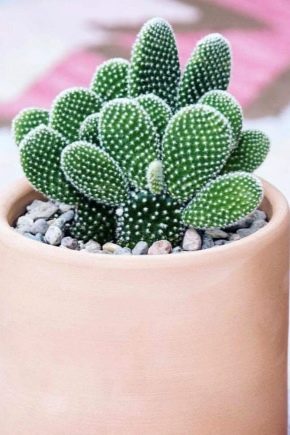
Cacti have been bred in our country for many decades. But the florist community is constantly being updated. And therefore, information about the species of these plants is very important; especially when you consider that some of them are little known.
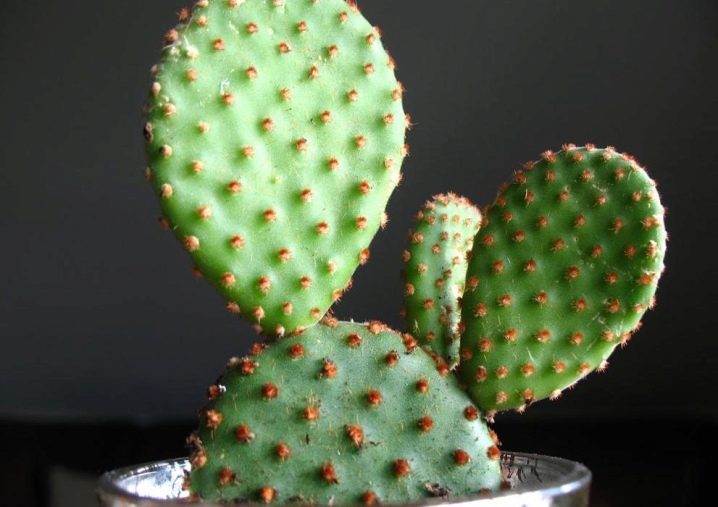
What it is?
The prickly pear cactus is a plant native to South America and Mexico. It is often called nopal, thus shortening the botanical name Nopalea cochenillifera. This type is popular in traditional medicine of Latin American peoples. It is used for:
- improving the condition of the skin;
- normalization of sleep;
- alleviating the condition of diabetics;
- increasing the strength of dental tissues and other bones;
- prevention of cancer;
- building up immunity in general.

The prickly pear looks pretty attractive. Moreover, its color depends not only on the specific variety, but also on the maturity of the plant. Specimens of orange, yellow, light green and red colors are described. The ground part of the plant resembles a pear, stretching about 0.07 m in length.
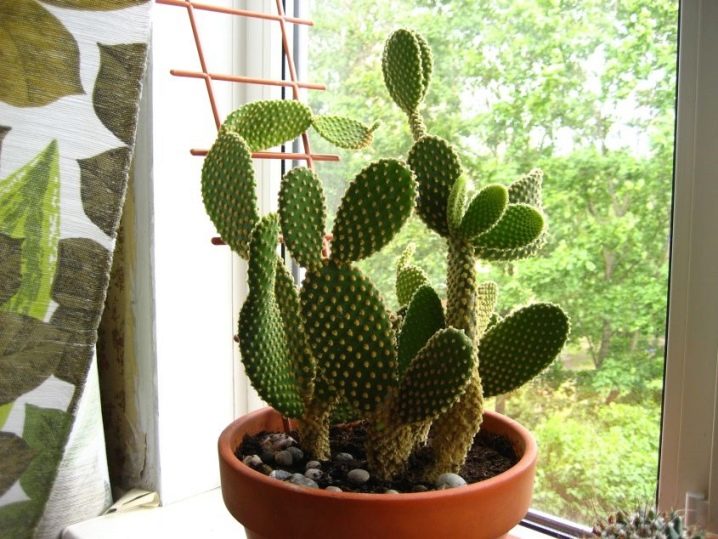
The fruits of prickly pear can be colored red, white and green. There are also purple, yellow fruits. It is known that their taste vaguely resembles ripe raspberries. In addition to its natural range, prickly pear grows in African and Mediterranean countries, even in Australia. It is noted that it perfectly adapts to partially arid regions, inhabiting fields and areas made of sandy soils.
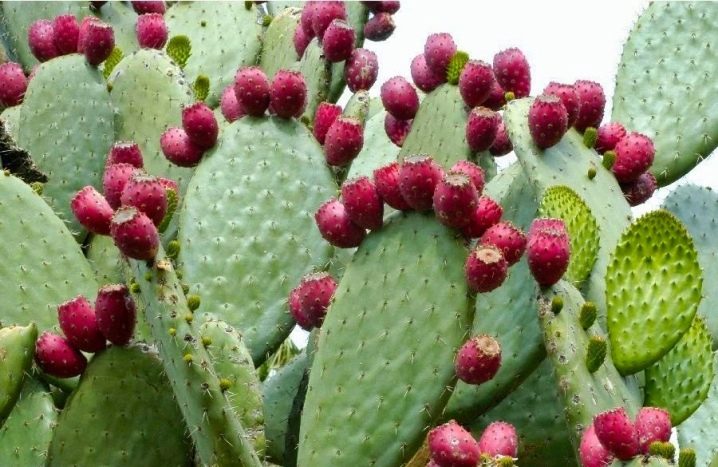
At home, the habitat of such a group of cacti is most often the lower tiers of mountain slopes. Opuntia are both shrubs and small trees. Their height can be 2 or 4 m. The preferred climatic zone is an abundantly sunlit desert. In nature, the plant tries to populate dry lands with good drainage properties.
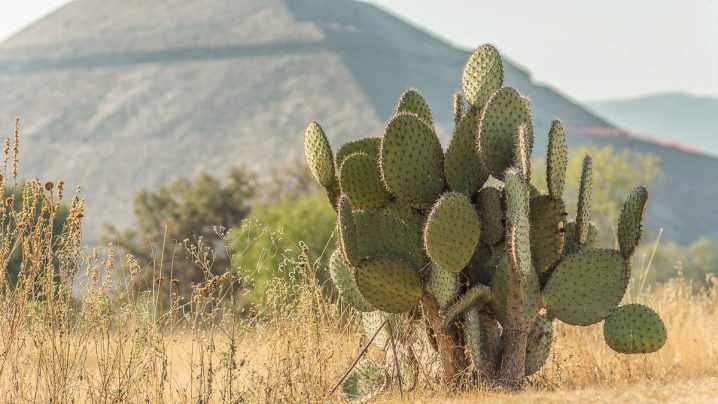
Biologists suggest that the species was formed in Mexico, and from there it spread throughout Central America. Wild prickly pear is found in Jamaica. They try to grow it in a variety of countries, because the fruits are beautiful, nutritious and healthy. In addition to trace elements, the fruit also contains vital essential amino acids. Berries can be eaten only after removing extremely sharp (like a well-sharpened straight razor) thorns.
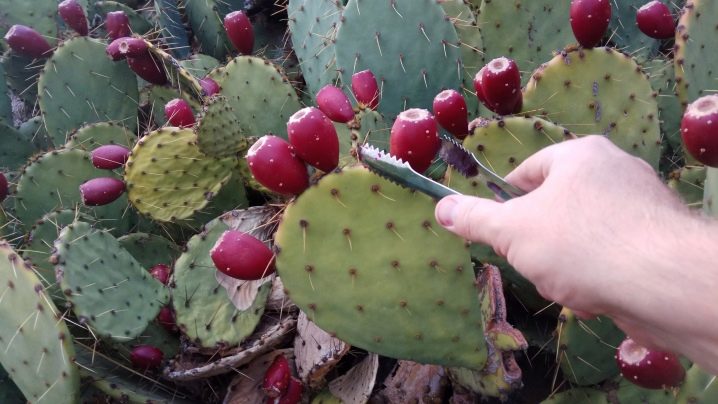
In Russia, prickly pear is most often used as a decorative species. But if it is nevertheless decided to use it for food, it is necessary to strictly limit the amount of the product. Otherwise, it can be dangerous. Particular care should be taken when:
- lack of blood sugar;
- low blood pressure;
- excess cholesterol;
- disorders in the thyroid gland;
- diabetes of two types;
- asthma;
- runny nose and other respiratory diseases;
- immunosuppression;
- liver problems;
- pregnancy and lactation;
- treatment of any kind of disease (without the direct permission of a doctor).
Views
Opuntia is the general name for a whole group of cacti. Moreover, their most numerous family (which includes, for example, the type of ovata). White-haired variety - This is a tree-like plant that grows up to 5 m. White hair of great rigidity flutters abundantly on the leaf segments - they gave the name. The flowers are quite large (diameter is 0.08 m).

You can often find prickly pear Berger. It resembles a green bush with angular shoots. The length of these processes is up to 0.25 m. The buds are covered with yellow spines. This species blooms thickly, and grows to more than 1 m.

Deserves attention fine-haired variety (aka microdasis). It forms branched stems. The height of the plant is relatively small - only 0.5 m. White areoles produce a mass of golden glochidia. In this case, thorns do not appear.

Has gained quite a lot of popularity Indian prickly pear. Contrary to the name, she came to our country directly from Mexico. An alternative name is fig prickly pear (as the fruits look like figs). Moreover, they are quite edible, and are sometimes used to make jams and sauces. The flat stems of the Indian species have relatively few thorns.
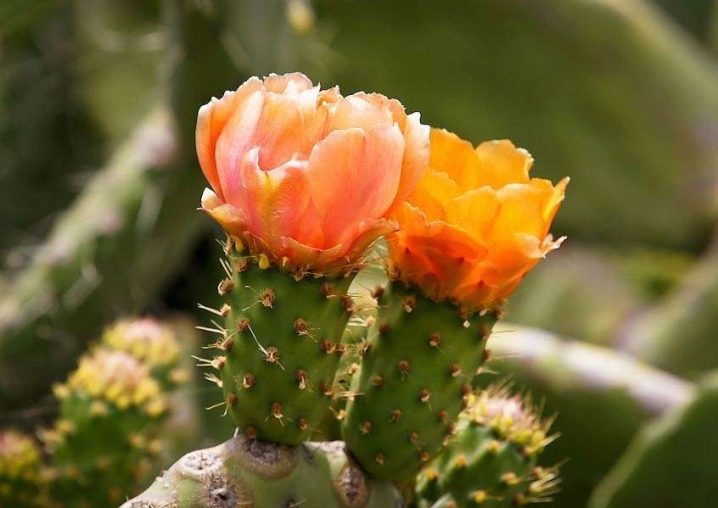
Common prickly pear resembles a tree in appearance. It is characterized by a strong, large stem. The symmetry between the processes, if broken, is not at all much. But it is unlikely that it will be possible to grow this kind of house - its height is up to 6 m. Areoles are slightly pubescent, some of them are covered with thorns.

Cylindrical variety named so for the special geometry of the stems. They turn a deep green. The bush can grow up to a maximum of 1.8 m. Under unfavorable conditions, its growth will not exceed 1.6 m. An attractive feature of the plant is the formation of pink flowers.
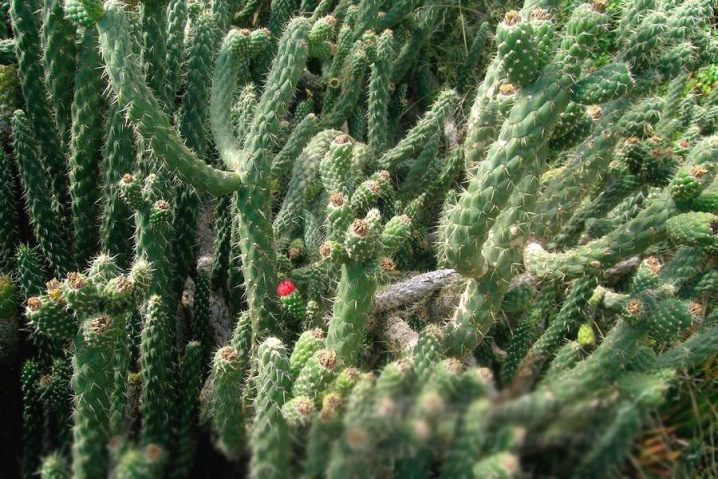
If you need a very fast growing plant, it will do prickly pear subulata. Two years are enough for it to rise 2 m in height. The species is distinguished by large, needle-like spines. They are formed on slightly noticeable tubercles covering the processes. The length of the cylindrical leaves can be up to 0.1 m; subulata gives red flowers with a slight pinkish tint.
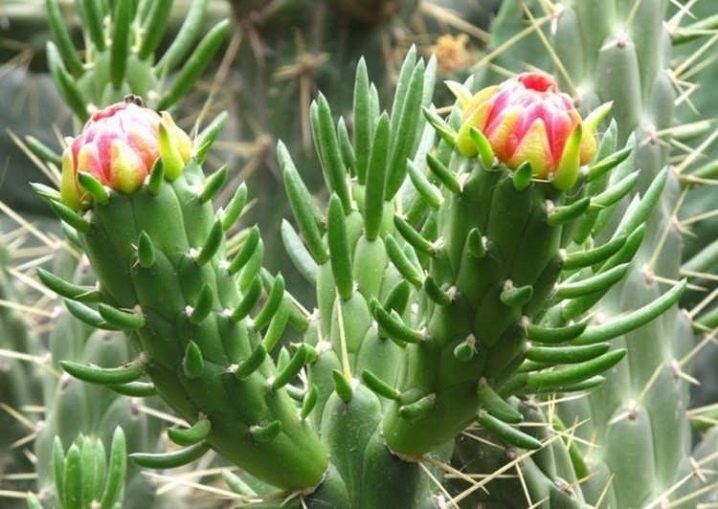
The Brazilian cactus has a flat stem. The segments are about the same, only slightly smaller. The relatively thin leaf-like processes suffer from poor conditions earlier than other parts of the plant.
With unprofessional care, they can even fall off. Normally, yellow oblong flowers are formed.
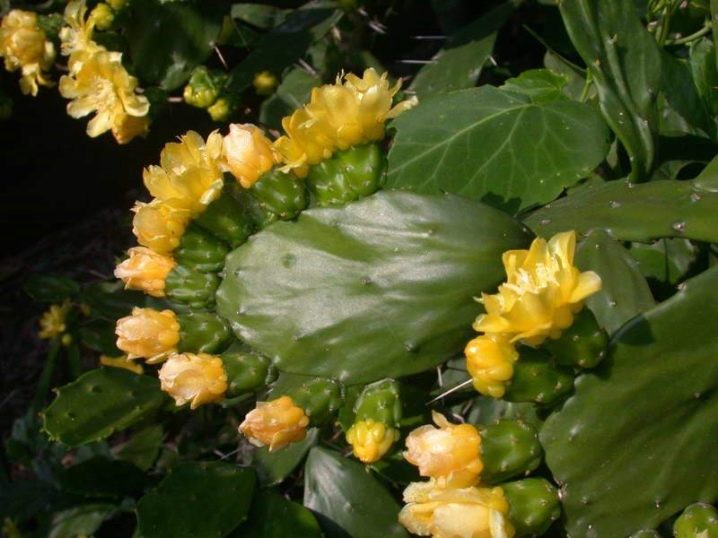
Monacanth - This is the name of the prickly pear, which has elongated parts of the shoot. It turns into light green stripes (clearly visible against a dark background). This type of cactus is highly fertile. Therefore, the number of processes near the base is noticeably higher than in most other species. There is even such a term - "cactus forest".

It is distinguished by its exceptional decorativeness crested (in other words "dressed") variety. Another name for it is cylindrical prickly pear. A general description is given just above. It should be added that the "fluff" on the plant may look like mold outwardly.
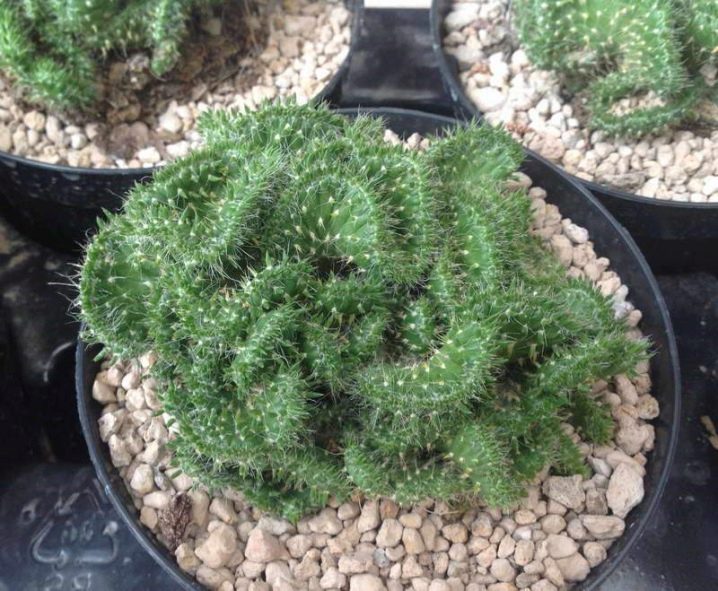
Conditions of detention
Opuntia, like other cacti, comes from South America. Among other genera, it differs in minimal whimsicality. But still it is worth taking care of the optimal thermal regime, decent humidity and systematic fertilization.
The plant takes root well only where good ventilation and high-quality lighting are provided at the same time. Although the cactus does not suffer from frost, excess moisture is harmful to it.
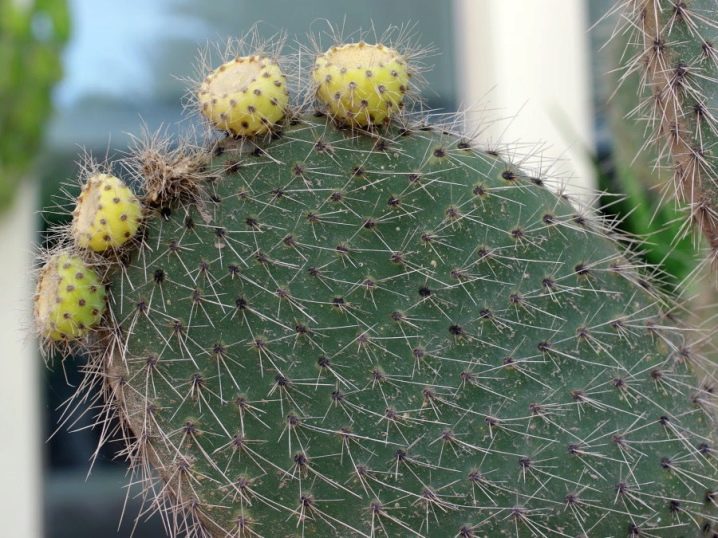
Experts advise not to transplant the culture unnecessarily. In the summer, it is very important for her to receive full moisture from the soil. This is achieved by loosening it or through the establishment of effective drainage. The addition of sand and small pebbles to the ground prevents almost 100% of the risk of root rot. The acidity level should be low; the content of nutrients is not too high.
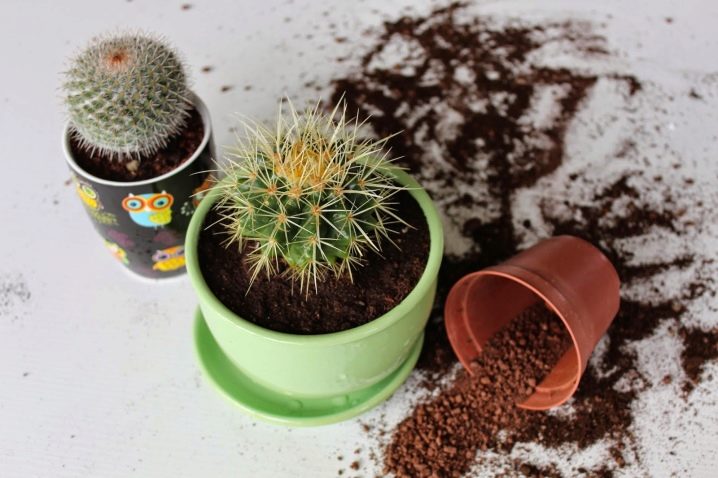
Prickly pears are planted mainly for the sake of aesthetic properties. Therefore, it is recommended to set aside elevated places for it. It is very good if there are elegant boulders and various flowers around. Despite the winter hardiness of the culture, areas are preferred where in the summer months it is warmest, and in frosts there is very little moisture.Outdoor wintering of a cactus is possible at –10 degrees; leaves and branches are used for additional protection.
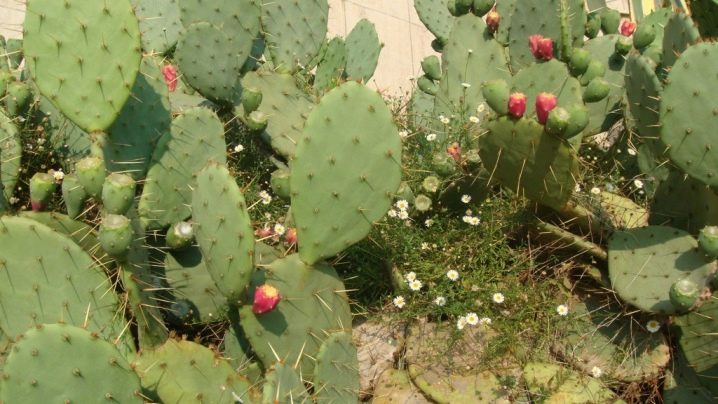
At home, the Mexican cactus should be as illuminated as possible. But by exposing the plant directly to direct sunlight, you can destroy it. It is necessary to accustom prickly pear to such tests gradually. But already in the garden, you can safely choose the sunniest areas already during transplantation. However, the landing itself requires knowledge of a number of subtleties.
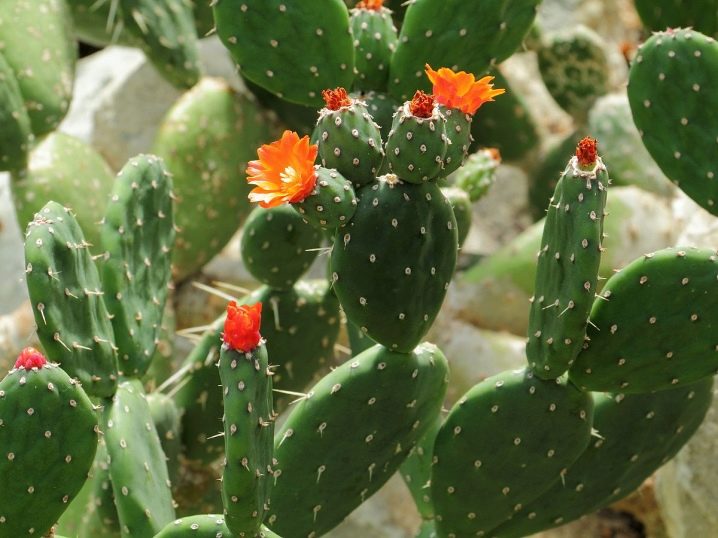
Landing
You can often hear that the cactus should definitely be planted in wide and relatively small containers. But only inexperienced or insufficiently versed people say this. In fact, lack of depth will only lead to premature drying out of the soil. Although many plants can be planted at first, they will die pretty soon.
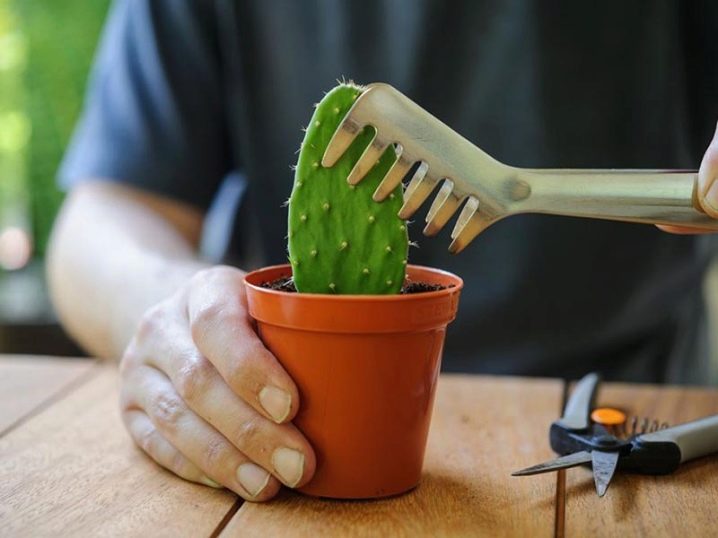
Almost all flower pots are useful for work, as long as there is a drainage hole at the bottom. Not necessarily one thing - sometimes they make several holes. You can even plant prickly pears in those pots that are placed on furniture or household appliances. Water will not run out if the drainage layer is made of stones. When choosing a pot, they immediately take into account whether it is necessary to stimulate the development of roots, or it is required to restrain it. The substrate is selected depending on whether you plan to plant seeds or cuttings.
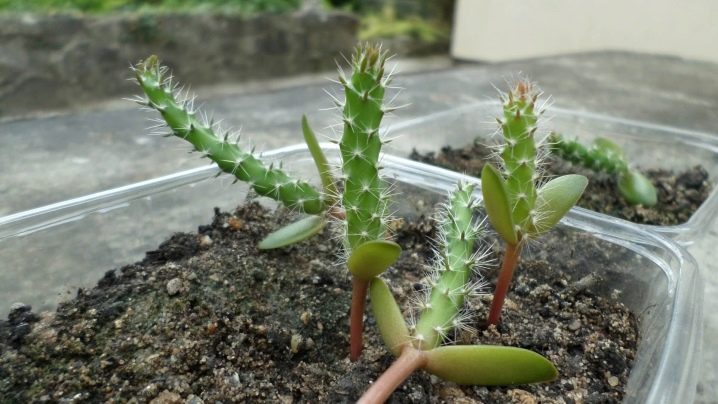
The grafting method involves the initial laying of the drainage mixture, over which a layer of sand and charcoal is poured.
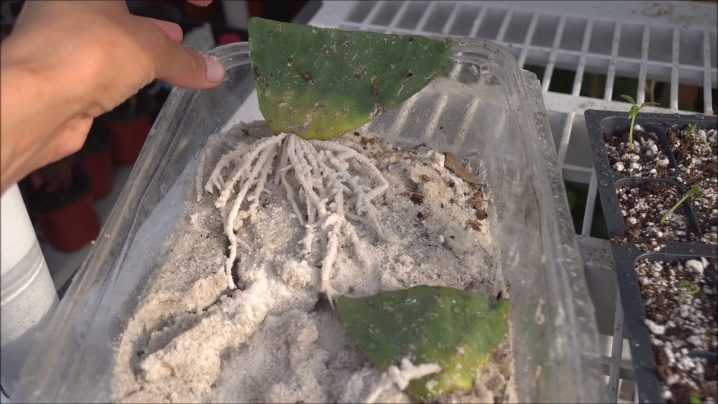
Important: the sand should be calcined to exclude infection by pathogenic microorganisms.
If seeds are planted, a mixture is placed on top of the drain:
- 1 part disinfected sand;
- 1 part charcoal;
- 1 part best compost.
Reproduction
A tree cactus, as already mentioned, can be propagated using seeds or cuttings. Transplanting from a cramped pot to a more free one can occur at any time. But we must wait until the earth dries up. First, the pots are placed in the shade. The first few days it is strictly forbidden to water the soil - the plant must take root.
Cuttings are carried out in spring and until mid-July. Only well-grown shoots are suitable for this procedure. They are carefully separated from the original plant, and then the sections are disinfected with crushed coal. The cuttings are dried for several days until the cut is covered with a strong film. Further, the shoots must be immersed shallowly into the substrate.

The container used for grafting is covered with a glass lid or plastic wrap. A temperature of about +10 degrees should be maintained under these materials. To prevent the container from drying out from the inside, you will have to spray the planting material from time to time. It also needs to be ventilated. After waiting for the roots to strengthen, the cuttings are transplanted into pots.
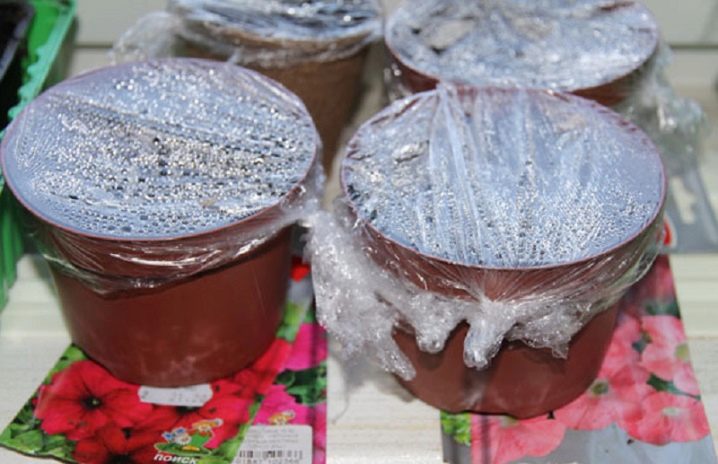
For your information: experienced gardeners can use plain calcined sand for grafting without doing any other tricks. However, then you will have to carefully monitor the development of culture.
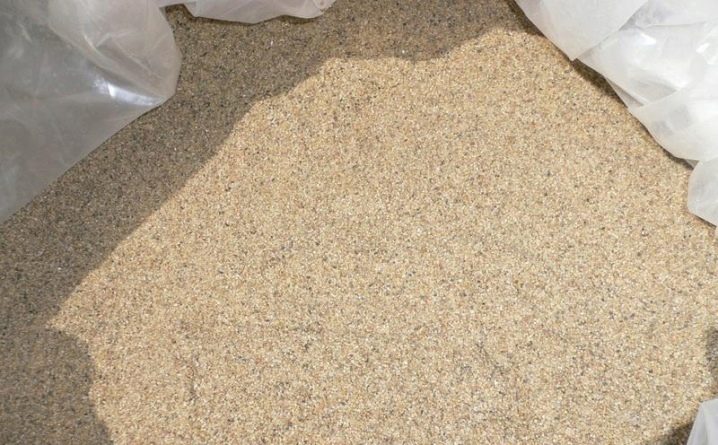
If a seed sowing method is chosen, the planting material must be carefully prepared. In a cactus, the seeds are hard, and if you put them in the ground right away, germination will be weak. There are 2 outputs: soaking for several days or rubbing the shell with sandpaper.
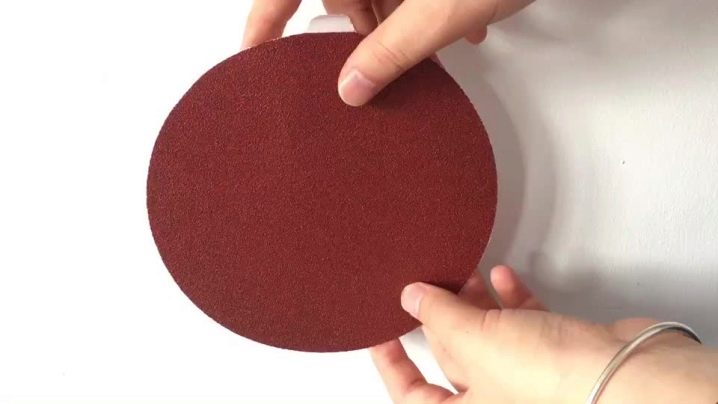
The first method is better, and not only because it is more gentle on the seeds. It will be possible in the last 15-20 minutes before planting to soak the planting material in an unsaturated solution of potassium permanganate. Further, the seeds are buried in the substrate and kept there at +20 degrees. As with cuttings, they will need to be ventilated and moisturized. Having achieved the appearance of sprouts, the prickly pear is transplanted into pots already for full growth.
How to care?
Although prickly pear is relatively unpretentious, it still deserves proper care. The work, however, is not difficult. All that is required of flower growers is the maximum provision of light and watering as needed. They resort to dressing only against the background of flowering.
But we must remember that for all the attractiveness of prickly pear, it does not cease to be a cactus.
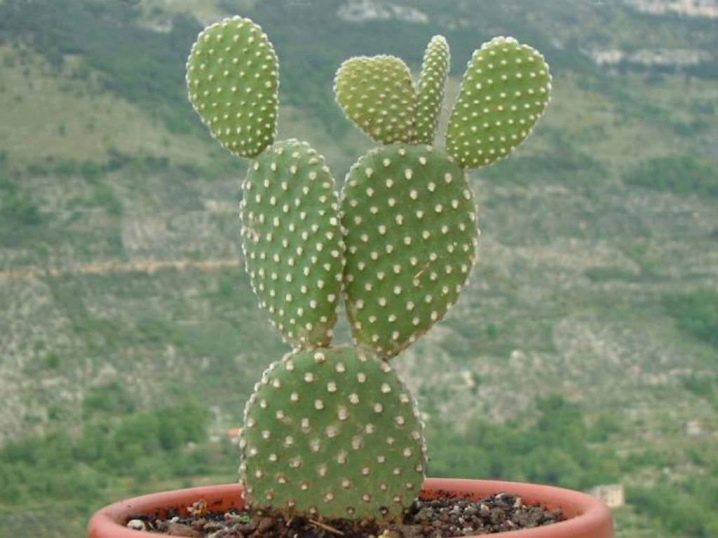
The plant is covered with a dense layer of small thorns. It is almost impossible to notice them. And it's even harder to get around. To remove the smallest splinters at home, washing your hands in warm, soapy water helps. However, you can completely avoid such troubles if you work in cloth gloves.

Like other succulents, this crop does not need systematic watering. It is carried out as often as required by the drying out of the earth. If in winter the air temperature drops to +6 degrees, watering can be stopped altogether. It is not necessary to renew it, even if the plant wilted a little. The very first spring irrigation will completely correct the matter.

Top dressing starts from the first warm days of spring. Then this procedure is continued until the end of the summer. The best fertilizers for prickly pear are those that contain a small amount of nitrogen. The intervals between their additions are from 12 to 15 days. Dissolving lemon juice in water helps to increase acidity, if it is low. You don't need a lot of it - 2 or 3 drops per liter will completely solve the problem.
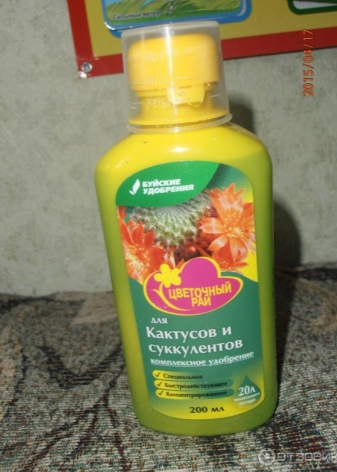
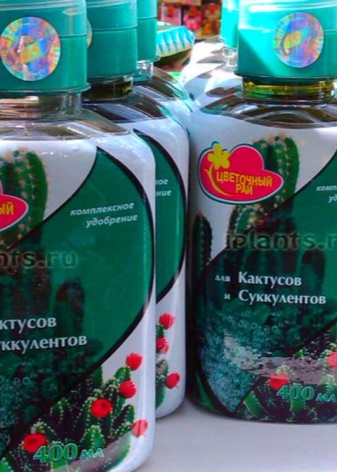
Correct feeding allows you to achieve graceful large flowers. But when they appear, fertilization must be stopped immediately. To bring flowering closer, it is necessary to immediately take out the pots to a well-ventilated sunny place when the frost subsides in the spring. Flowering plants should be left in one place. Otherwise, you can be afraid of dropping the petals.
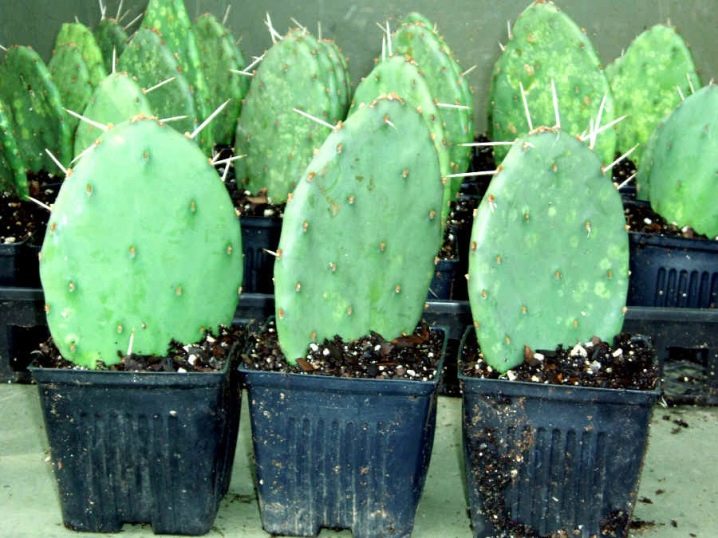
Returning to watering, it should be noted that only soft water should be used for it. Increased hardness (lime content) can inhibit growth. It is recommended to defend water. Pour it only into the pallet. Excessive moisture threatens the appearance of root rot.
Instead of lemon juice, you can acidify the irrigation water with citric acid. You do not need to spray this cactus. If the heat is intense, you should take care of the ventilation of the room. Ideally, take the pots outside. It is recommended to avoid temperatures above +40 degrees. Autumn preparation implies a gradual decrease in temperature.
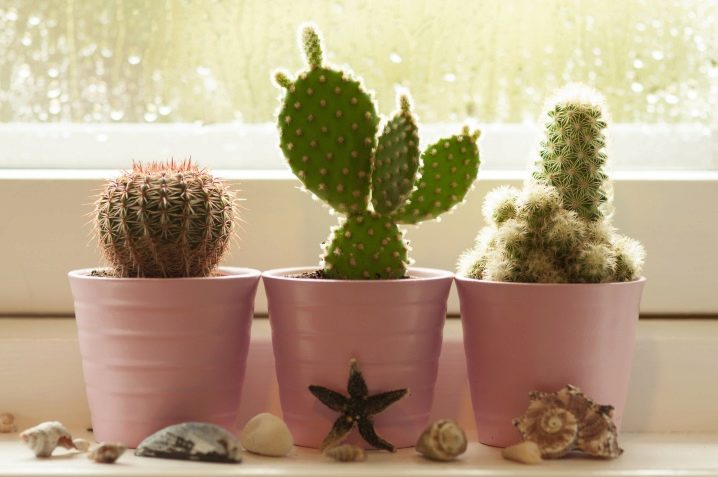
Diseases and pests
Although prickly prickly, it only protects it from humans and animals. Microscopic organisms and a number of pests may well harm such a cactus. The main danger for him is viruses. A typical manifestation is variegated spots with a yellow-green tint. The main cause of viral aggression is pest damage or mechanical damage to cuttings.
Alas, it is impossible to save the prickly pear infected with viruses. It remains only to get rid of it and think carefully about what mistakes were made. Many violations of the rules of care lead to the fall of the buds. And also because of them, roots can rot or burns appear. It remains to be hoped that plants will be able to survive such problems and adjust their approach.
Excessive cork will not interfere with the cactus. But it is one of the first manifestations of improper agricultural practices.
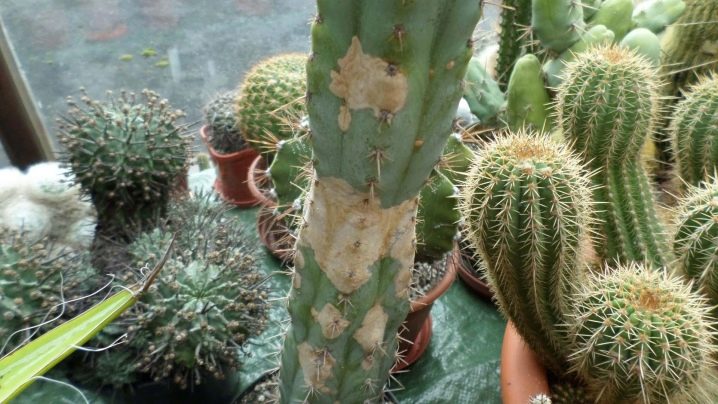
Important: in old cacti, the cork layer is inevitably formed. It's all about the inevitable aging of the epidermis. Nothing can be done about this, you just need to prepare for planting a new plant.
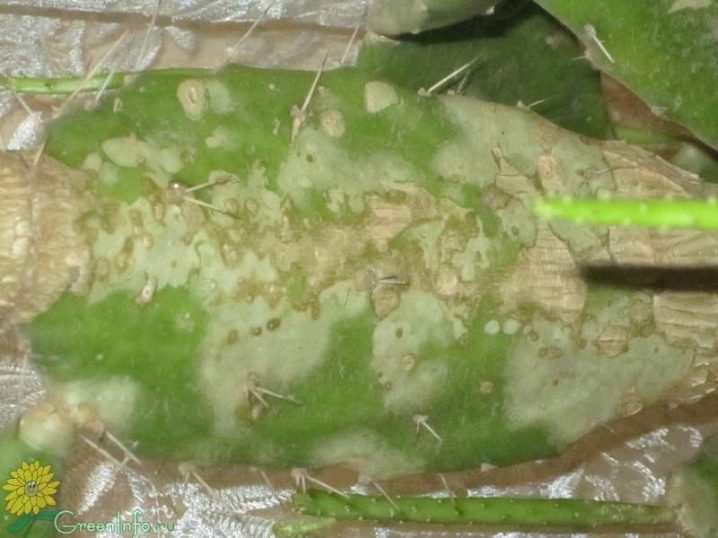
Corking caused by gardener errors is treated by placing the pot in a well-lit place. It is helpful to remember if the plant has been over-fertilized. To rejuvenate it, the upper part is sometimes cut off and rooted. Chlorosis, or loss of chlorophyll, externally manifests itself as yellowing of the shoots. Sometimes, instead of pure yellow, they acquire a yellow-green color.
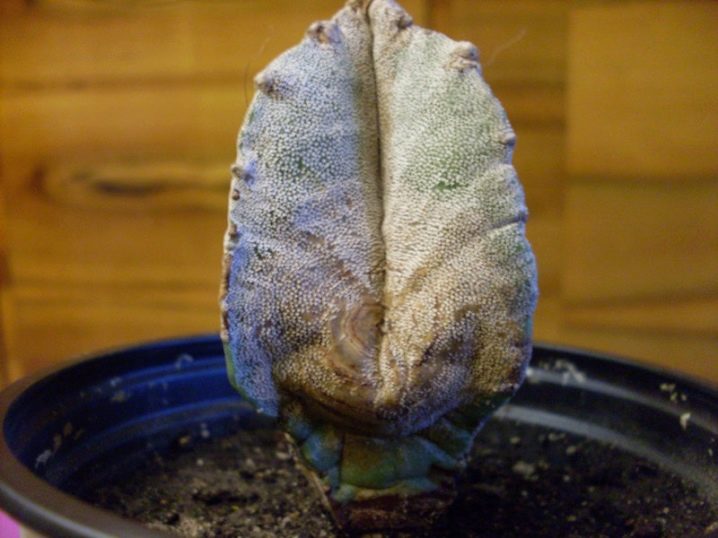
Micronutrient supplementation should be used to combat this disorder. Timely feeding with appropriate fertilizers helps to avoid problems in the bud. Fungal infection, however, is much worse than chlorosis, and is second only to a viral infection in terms of danger. Fortunately, fighting him is quite possible.The main condition for success is the immediate separation of diseased specimens.
Gray mold infects seeds, but only appears on mature seedlings and mature plants. They are covered with brown spots. If you start the process, the prickly pear will die. The only possible control method is preliminary treatment with special fungicides. Another fungus causes the so-called gangrene of seedlings.
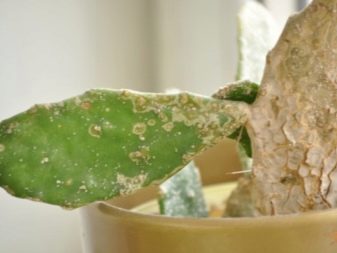
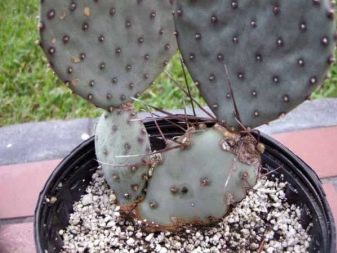
Infection is possible both from seeds and through the ground. In both cases, the base of the stem and roots first turn black and then die off altogether. Helps disinfect soil and seeds.
Of the pests of cacti for prickly pears, mealybugs are very dangerous. By absorbing the sap, they interfere with the normal development of the plant. As a result, it turns yellow. More often than others, young specimens suffer from worms. You can deal with them by moving the pot to a colder place and increasing the humidity of the air.
A spider mite is a small (approximately 0.001 m) parasitic organism. He eats the tops of the shoots. You can expel spider mites by freshening the air. But it is also helpful to use soapy water for spraying.

Shields got their name from their characteristic protective devices. It is very difficult to deal with them. But you can try a complex method: removing pests mechanically and processing with chemicals.
Root felts are a great danger. They can infect a plant that hibernates in dry soil. At the beginning of the growing season, the prickly pear is pulled out and the roots are carefully examined. The cobweb that remains after felting differs from the roots in a paler color. The diseased root system is washed with dishwashing detergent; to consolidate success, completely change the substrate.

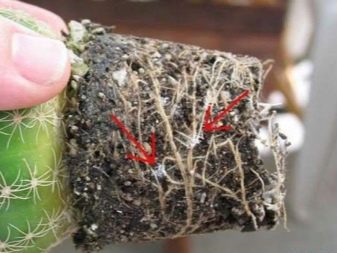
It is important when using any factory formulations:
- comply with all rules of use;
- monitor temperature and humidity;
- do not use too large amounts of drugs;
- do not exceed concentration;
- also observe the instructions for processing times.
Possible growing problems
It so happens that a houseplant in the middle of a stormy growth period becomes lethargic and faded, the green parts shrivel. Dry soil turns out to be the main culprit. For a long time, the plant can survive due to the accumulated water reserves, but they are not endless. If increased watering does not help, you need to check if the plant has become cramped..
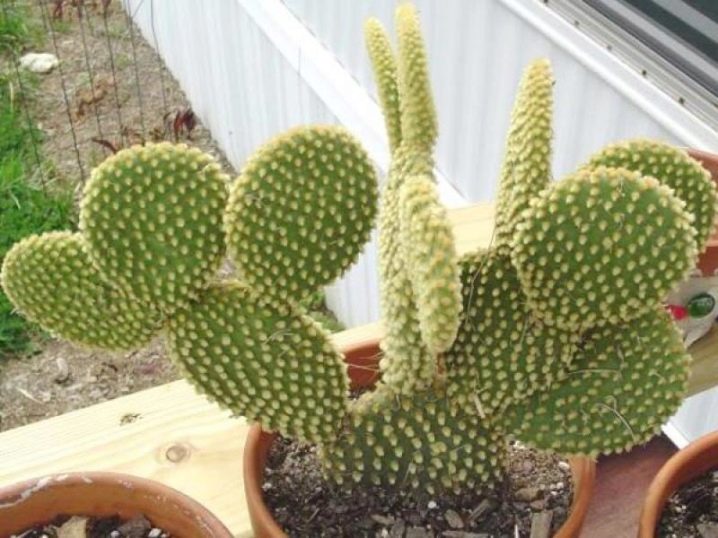
Inhibition or complete cessation of growth during the growing season may be due to improper selection of land. Sometimes its excessive density is to blame. Air does not pass through and the roots are deprived of sufficient oxygen. The solution is to transplant into less dense substrates.
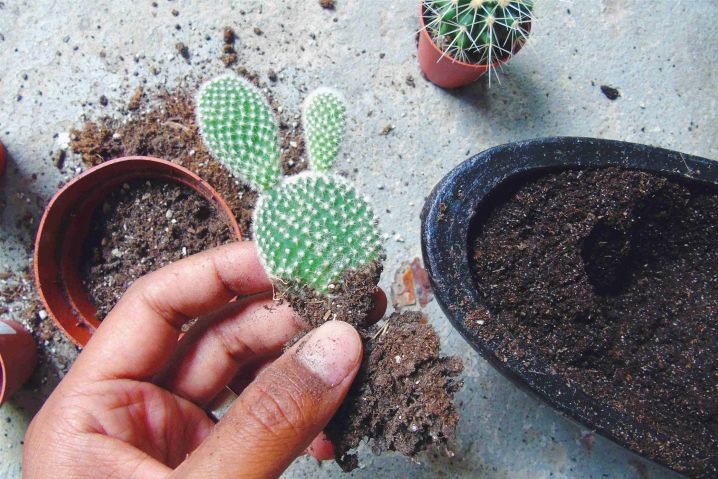
Important: if a mistake has already been made in compiling them, it is better to buy a ready-made mixture.
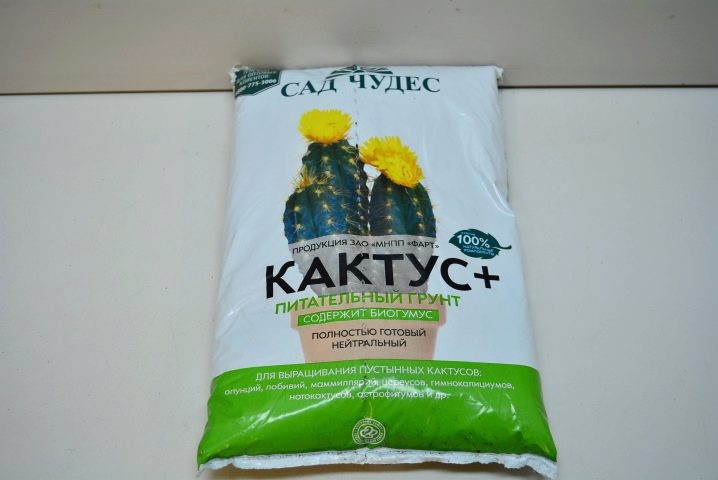
Light spots covering the stem can be a serious problem. If the plant is under the open sun for a long time, they will arise almost inevitably. But another reason is also possible - a sharp change in illumination. This happens when the pots, after a long stay in the room, are immediately taken out into the street. The duration of the stay of the flower on it should be increased gradually.
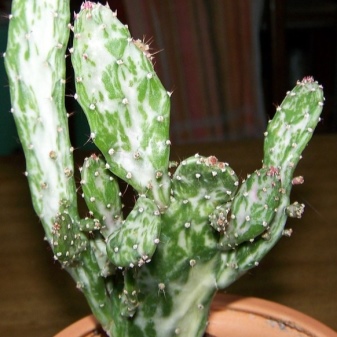
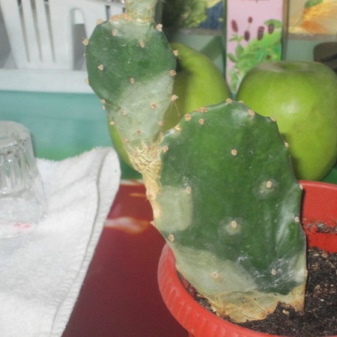
Florists often complain about the darkening of prickly pear near the root. In this case, spots of brown or black appear there. The stem may droop or even lie flat on the ground. In such a situation, it is very important to save a diseased plant from decay. For this purpose:
- reduce the frequency of watering;
- check the condition of the drainage;
- if necessary, adjust it from scratch;
- if the plant is in open ground, take care of the drainage of precipitation.
It is also necessary to reduce the intensity of watering in the case when the segments of the trunk are torn, cracked. Thus, prickly pear tries to get rid of excessive moisture.
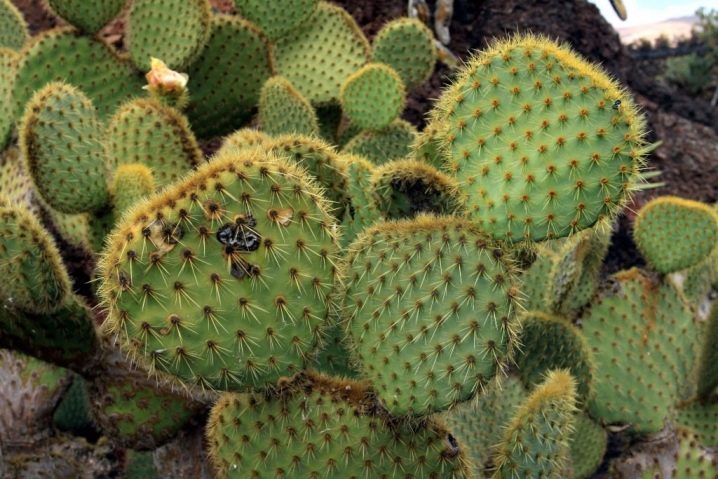
Important: not only the amount of water poured out is subject to adjustment, but also the frequency of irrigation. A stem that dries up and shrivels in winter indicates overheating of the air.In this case, the upper layer of earth is sprayed with water, and then the pot is moved to a cooler place.
You will learn more about the prickly pear cactus from the video below.























































The comment was sent successfully.